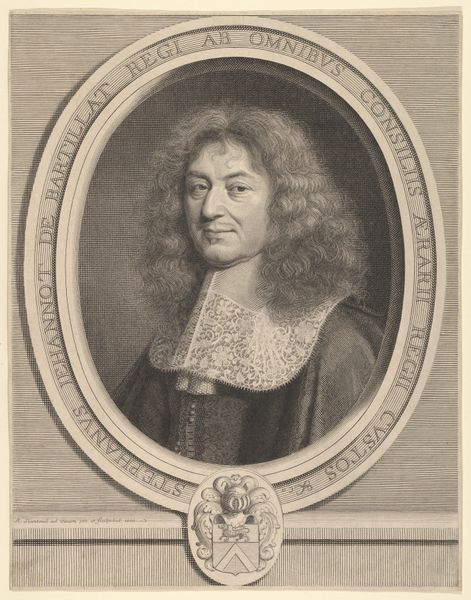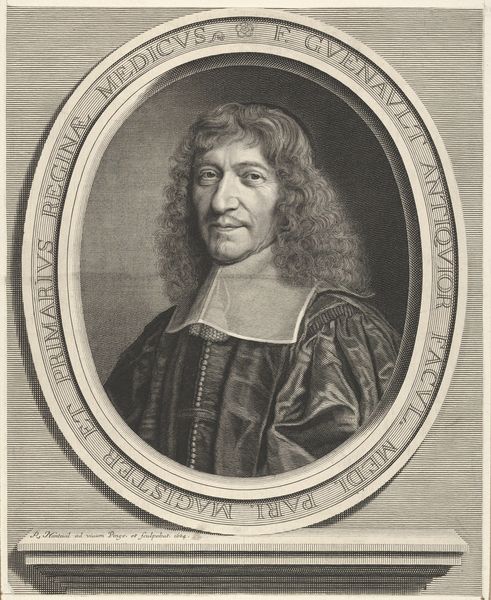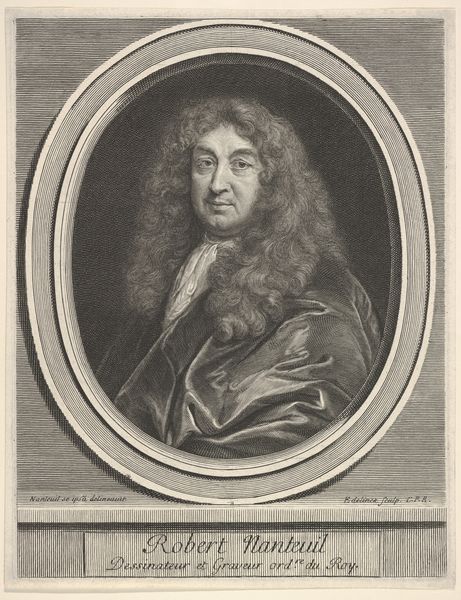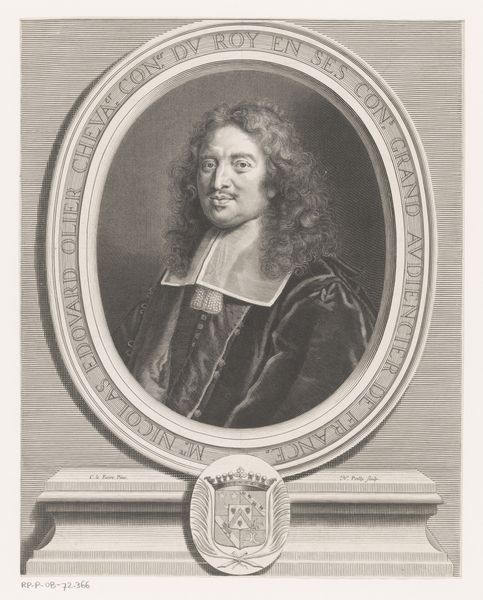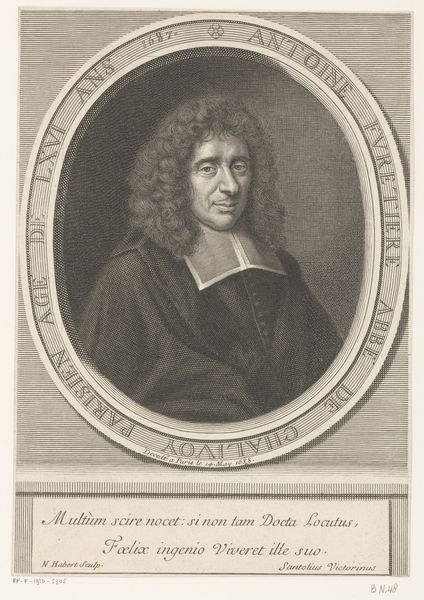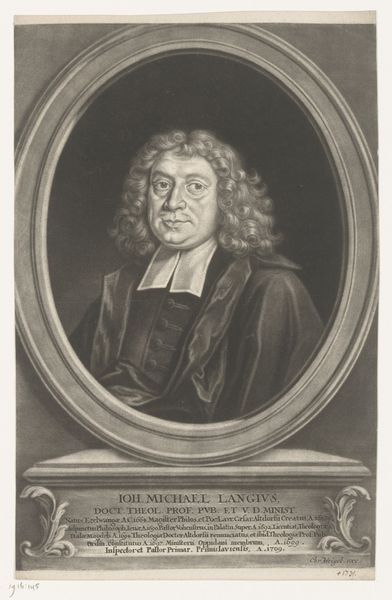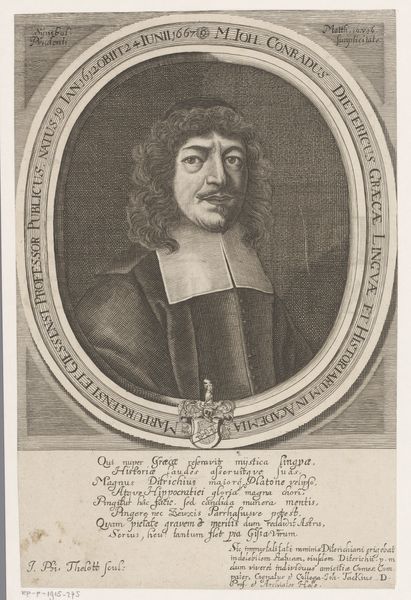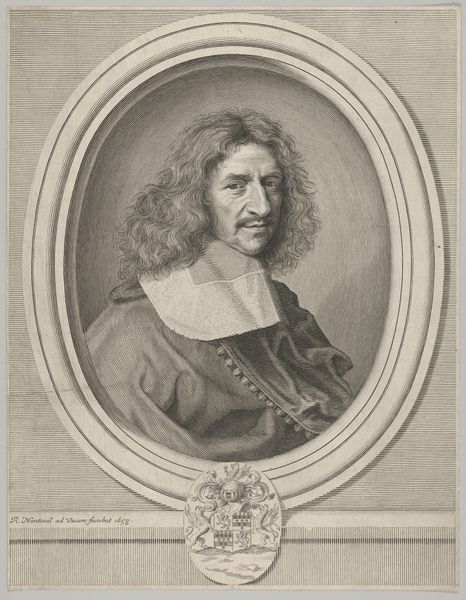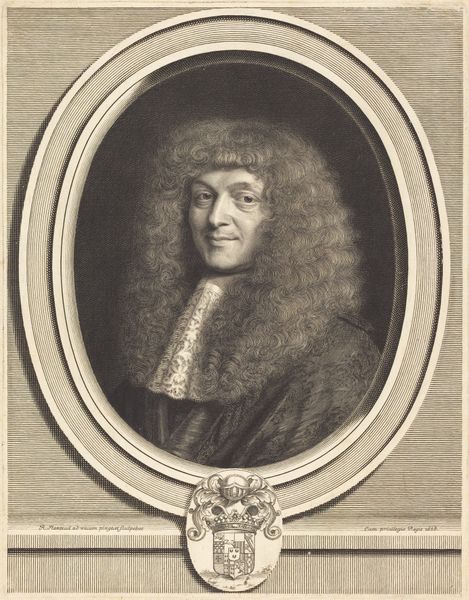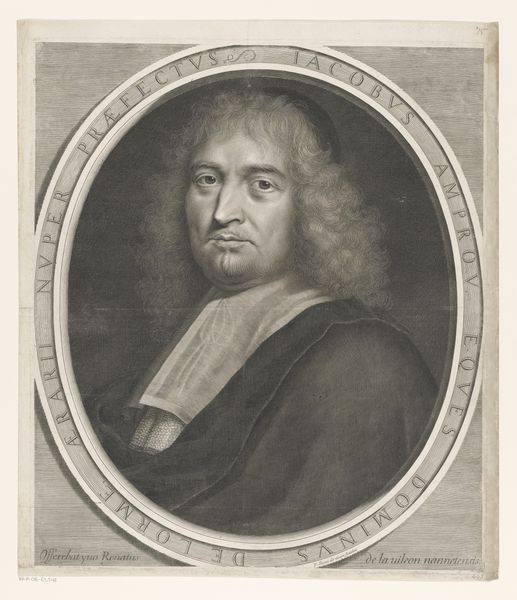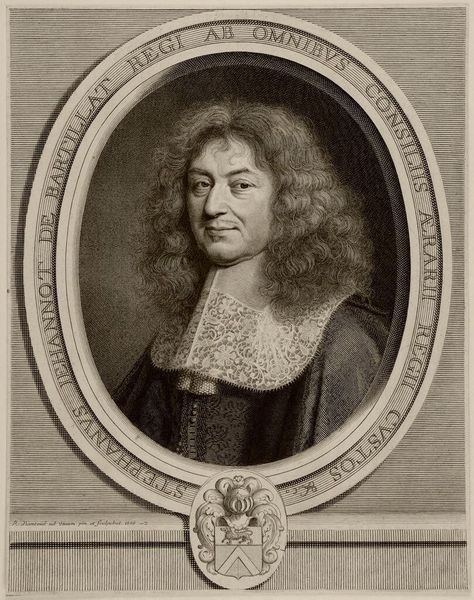
engraving
#
portrait
#
baroque
#
figuration
#
line
#
history-painting
#
engraving
Dimensions: height 287 mm, width 226 mm
Copyright: Rijks Museum: Open Domain
Editor: So, here we have Antoine Masson's "Portret van Marin Cureau de la Chambre op 70-jarige leeftijd," created as an engraving in 1665. The precision is striking; I’m really drawn to the texture in his hair. What jumps out to you in this piece? Curator: The symbolic weight carried by portraiture in the 17th century is quite potent, especially in capturing individuals like Marin Cureau, a prominent physician and philosopher. Notice how the oval frame both confines and elevates him – a visual representation of his status, but also perhaps a hint at the constraints of societal expectation. What do you think that headdress and elaborate collar might signify in that era? Editor: I guess it points to status… maybe intellect? Almost academic regalia. It’s certainly not casual attire. Curator: Exactly. These visual cues functioned as symbolic language, communicating identity and affiliations. Consider the gaze: direct, but not challenging. It's an invitation to engage, but also a statement of authority rooted in knowledge and experience. How does that interplay of directness and constraint affect your interpretation of his character? Editor: It creates a sense of measured confidence… he's sure of himself but not boastful, if that makes sense. Curator: Precisely! It demonstrates an understanding of his place in society, doesn't it? The portrait becomes less about pure representation and more about encoding a specific cultural narrative. Editor: That gives me a whole new way of looking at portraits from this period. It’s like deciphering a code. Curator: Indeed! Each element contributes to a rich tapestry of meaning, reflecting both the individual and the cultural values they embodied. Editor: Well, I will certainly remember to look for these elements in other portraits as well. Thanks!
Comments
No comments
Be the first to comment and join the conversation on the ultimate creative platform.

